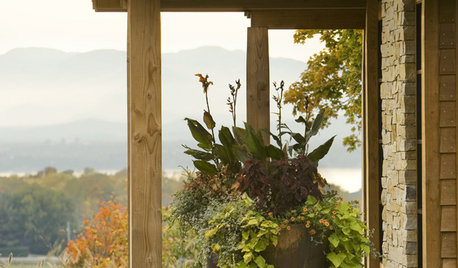Problems growing tree in a tall narrow pot
creekweb
12 years ago
Related Stories

GARDENING GUIDESGrow Your Own Privacy: How to Screen With Plants and Trees
Use living walls to lower your home and garden's exposure while boosting natural beauty in your landscape
Full Story
SIDE YARD IDEASNarrow Trees for Tight Garden Spaces
Boost interest in a side yard or another space-challenged area with the fragrance and color of these columnar trees
Full Story
SPRING GARDENINGHow to Grow a Rose Garden in Pots
Everything can come up roses, even without a plot of soil in sight. This step-by-step guide to growing roses in containers shows you how
Full Story
GARDENING GUIDESGrow a Beautiful Fall Garden in a Pot
Welcome autumn with 7 gorgeous plants that thrive in containers and enliven your porch or patio throughout the cooler season
Full Story
EDIBLE GARDENSHow to Grow 10 Favorite Fruit Trees at Home
Plant a mini orchard in fall, winter or early spring to enjoy fresh-off-the-tree fruit the following year
Full Story
EDIBLE GARDENSHow to Grow Your Own European and Asian Pears
Try these trees for their good looks, delicious fruit and wide range of sizes — plus you can espalier them
Full Story
FRUIT TREESHow to Grow Your Own Juicy Plums
Easier than other stone fruits and with a variety of colors to choose from, plums are a versatile garden addition
Full Story
LANDSCAPE DESIGNProblem Solving With the Pros: How to Build a Garden in an Urban Canyon
Skyscrapers, noise and deep shade create an unlikely sweet spot for a timeless green retreat in New York City
Full Story
FARM YOUR YARD10 Easy Edibles to Grow in Containers
These herbs, vegetables and fruits are just as happy in a pot as they are in the ground
Full Story
EDIBLE GARDENSHow to Grow Your Own Peaches and Nectarines
Make gardening a little sweeter with these juicy fruits, which you can eat after plucking or preserve for later
Full StoryMore Discussions







greenman28 NorCal 7b/8a
tapla (mid-Michigan, USDA z5b-6a)
Related Professionals
Norristown Landscape Contractors · North Highlands Landscape Contractors · Winchester Landscape Contractors · Woodbury Landscape Contractors · Brockton Solar Energy Systems · Lomita Solar Energy Systems · Ramsey Solar Energy Systems · East Hanover Solar Energy Systems · Brooklyn Window Contractors · Compton Fence Contractors · Fullerton Fence Contractors · Hawaiian Gardens Fence Contractors · Ponte Vedra Beach Fence Contractors · Sun City Fence Contractors · Thousand Oaks Fence ContractorscreekwebOriginal Author